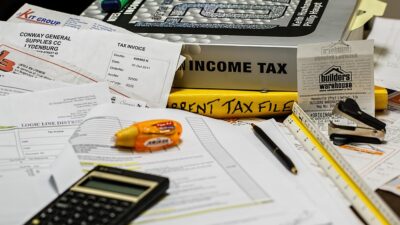Meal planning can be a game-changer for anyone looking to eat healthier, save time, and reduce stress during the busy workweek. With a little organization and creativity, you can map out a week of delicious meals that keep your taste buds satisfied and your nutrition on point. Here’s a guide to help you make meal planning effortless and enjoyable, complete with a week’s worth of meal ideas.
Benefits of Meal Planning
Before diving into meal ideas, let’s explore why meal planning is beneficial:
- Saves Time: Avoid the daily “What’s for dinner?” dilemma by prepping meals in advance.
- Reduces Food Waste: Planning helps you use ingredients efficiently, cutting down on waste.
- Healthy Eating: You can make conscious choices about ingredients and portion sizes.
- Saves Money: By planning your meals, you can buy in bulk and minimize impulse purchases.
- Culinary Variety: Variety prevents boredom and encourages you to try new dishes!
Tips for Successful Meal Planning
- Choose a Day: Dedicate one day a week to plan meals, whether it’s Sunday or any day that works for you.
- Use a Planner: A digital app or a simple notebook helps keep track of meals, grocery lists, and recipes.
- Incorporate Leftovers: Plan for meals that create leftovers for lunch or another dinner.
- Mix and Match: Cook staples like grains or proteins in bulk, and vary the seasonings or sauces throughout the week.
One Week of Meal Ideas
Here’s a structured meal plan to get you started on a week of deliciousness!
Day 1: Monday
Breakfast: Overnight oats topped with berries and nuts.
Lunch: Quinoa salad with chickpeas, diced cucumber, tomatoes, and feta cheese, drizzled with lemon vinaigrette.
Dinner: Lemon garlic roasted chicken with steamed broccoli and brown rice.
Day 2: Tuesday
Breakfast: Smoothie with spinach, banana, yogurt, and a scoop of protein powder.
Lunch: Turkey and avocado wrap with mixed greens and a side of carrot sticks.
Dinner: Spaghetti with homemade marinara sauce and turkey meatballs, garnished with basil.
Day 3: Wednesday
Breakfast: Greek yogurt with honey, granola, and sliced banana.
Lunch: Mediterranean grain bowl with farro, roasted veggies, olives, and a dollop of tzatziki.
Dinner: Baked salmon with asparagus and quinoa pilaf.
Day 4: Thursday
Breakfast: Scrambled eggs with spinach and whole-grain toast.
Lunch: Lentil soup with a side of whole-grain crackers.
Dinner: Taco night! Ground beef (or vegetarian alternative) with taco fixings: lettuce, cheese, salsa, and avocados.
Day 5: Friday
Breakfast: Chia pudding topped with mixed fruit.
Lunch: Chicken Caesar salad with homemade dressing.
Dinner: Pizza night! Use a store-bought crust or cauliflower base, topped with your favorite vegetables and protein (chicken, pepperoni, or extra cheese).
Day 6: Saturday
Brunch: Breakfast burrito with scrambled eggs, black beans, cheese, and salsa.
Snack: Hummus with bell peppers, cucumber, and pita chips.
Dinner: Stir-fried tofu with mixed vegetables served over jasmine rice.
Day 7: Sunday
Breakfast: Whole-grain pancakes topped with maple syrup and walnuts.
Lunch: Cobb salad with hard-boiled eggs, bacon, blue cheese, and avocado.
Dinner: Slow-cooker chili with assorted beans, ground turkey, and bell peppers, served with cornbread.
Final Tips
- Prep Ahead: Spend a few hours on the weekend prepping ingredients or even cooking full meals that can be stored in the fridge or freezer.
- Stay Flexible: Don’t hesitate to swap meals based on cravings or unexpected changes in your schedule.
- Get Creative: If you find certain meals aren’t appealing, experiment with spices and sauces to keep things exciting.
With this meal planning framework, you’re well on your way to enjoying a week filled with nutritious and delicious meals. Embrace the process, customize it to fit your tastes, and watch how it simplifies your week and boosts your health! Happy meal planning!



